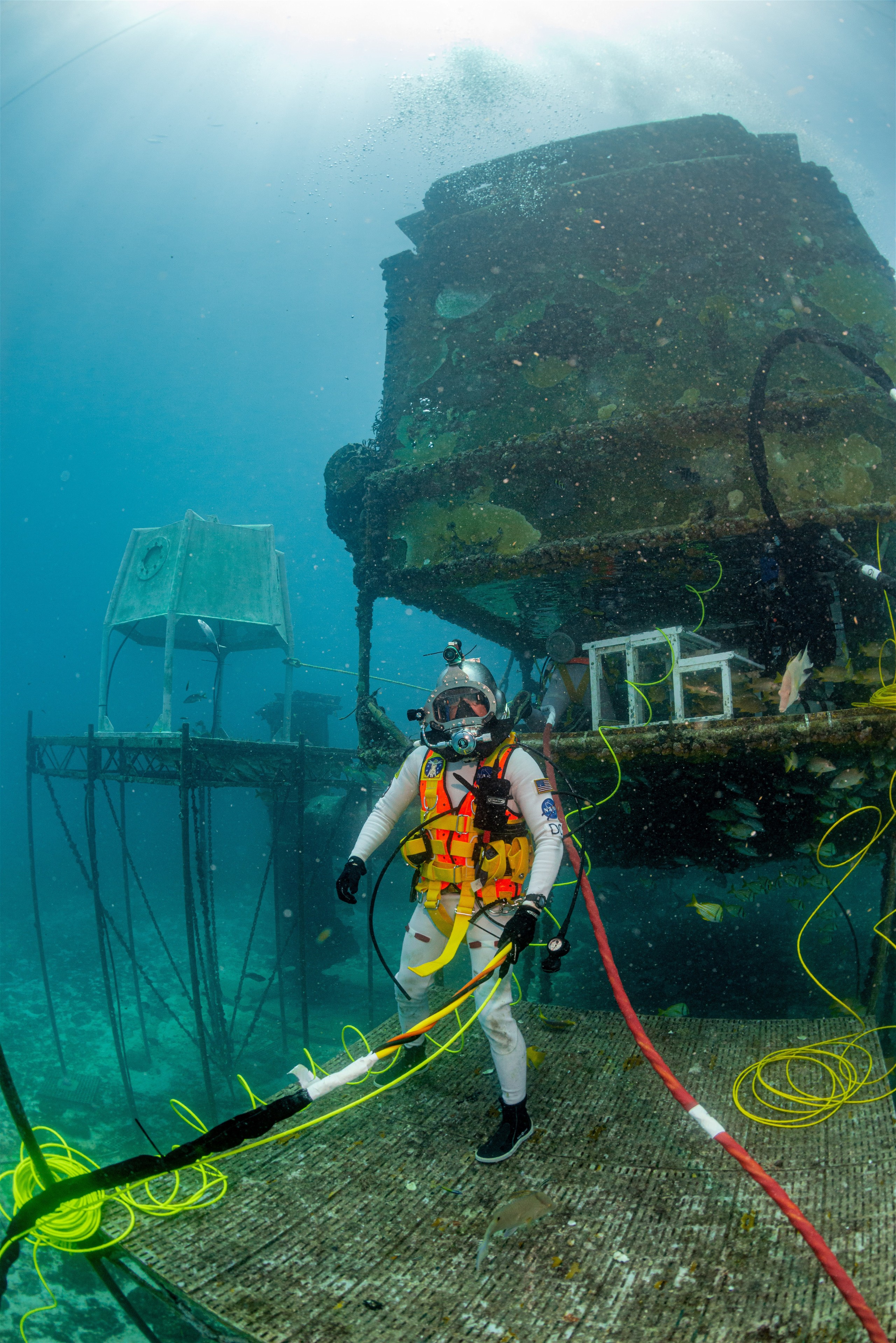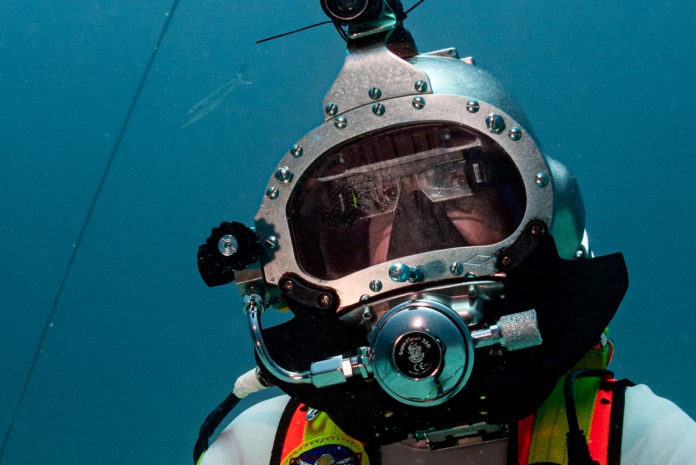Scientists and engineers are collaborating to take a piece of technology, originally designed for diving, from seabed to space.
The Diver Augmented Vision Device team from the U.S. Naval Surface Warfare Center Panama City Division and partners recently joined forces with the National Aeronautics and Space Administration Johnson Space Center during NEEMO-23, the 23rd voyage of the NASA Extreme Environment Mission Operations mission held at the Aquarius Reef Base underwater habitat in Key Largo.
The DAVD is a high-resolution, see-through heads-up display (HUD) embedded directly inside of a Kirby Morgan-37 dive helmet. This unique system provides divers with high-resolution visual displays of everything from sector sonar imagery (real-time topside view of the diver’s location and dive site), text messages, diagrams, photographs, and even augmented reality videos.
The Aquarius Reef Base, operated by Florida International University, is the only undersea laboratory in the world located 5.4 miles off Key Largo in the Florida Keys National Marine Sanctuary, 62 feet below the surface. The Aquarius and its surroundings provide an ideal training and mission analog for space exploration by providing buoyancy similar to walking on the moon, or Mars.

NSWC PCD designed, developed, and tested the original DAVD prototype systems. The newest iteration of the system participating in this NASA mission is the DAVD Generation 1.0, developed under a Cooperative Research and Development Agreement with industry partner Coda Octopus Group, Inc.
During NEEMO-23, NASA astronauts and technical personnel used the DAVD Generation 1.0 system to conduct analog training missions and determine the potential for using a similar system in their future Extra Vehicular Activity (EVA) Spacesuits during space exploration missions.
Allie Williams, team lead engineer for DAVD, said she is thrilled to see the leaps and bounds the project is making:
“It’s exciting to see dual-purpose use for a system originally designed for navy divers, and it is an honor to work with NASA. This capability is game changing for divers who usually work in zero visibility conditions — it essentially gives them sight again through real time data and sonar. Even in good visibility conditions, the DAVD system allows for hands-free information and less mental strain of trying to remember topside instructions. The same benefits can be gained by astronauts as well — including better situational awareness, safety, and allowing them to be more effective in their missions.”
Dennis Gallagher, team project manager for DAVD, explained an additional goal of integrating the DAVD system into the NEEMO-23 mission is to “develop a collaborative Navy-NASA program that offers next-generation see-through HUD capabilities for the new NASA Extra Vehicular Activity (EVA) Spacesuit, and the Navy 1-Atmosphere Dive Suit.”
Gallagher continued:
“You don’t achieve ‘warfighting dominance’ by taking 10 years to finally develop a rugged rotary dial phone. You achieve it by becoming the collaborator of choice with academia, federal labs, and industry using innovative and creative partnerships. This allows us to develop emerging technologies into new capabilities and solutions for the Warfighter at a significantly accelerated pace.”
According to Gallagher, outcomes and lessons learned from the NEEMO-23 missions will provide insight needed to move the system one step closer to space.
The Naval Sea Systems Command Supervisor of Salvage and the Office of Naval Research are co-sponsors of the DAVD project.

